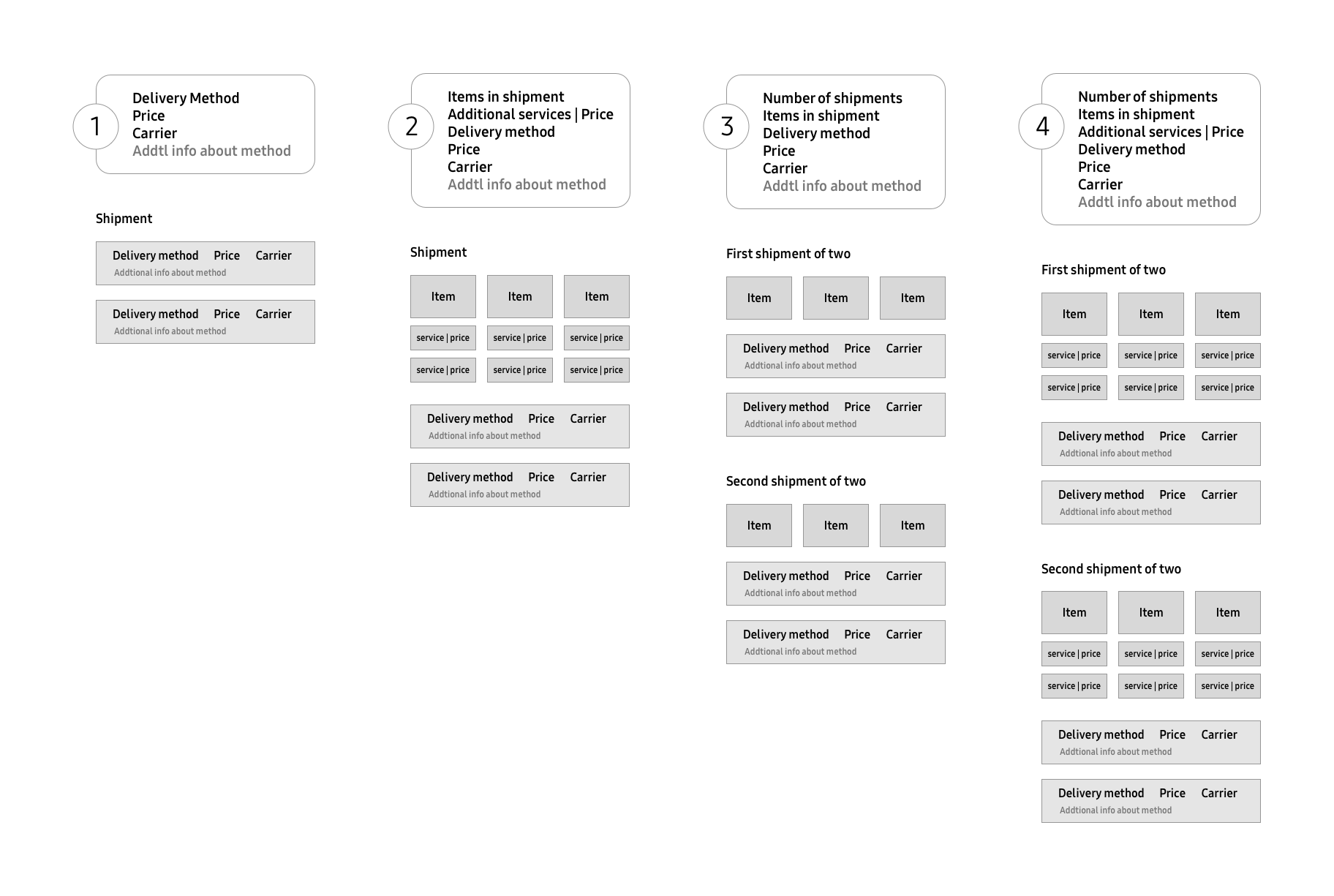MY ROLE
On a team of eight UX designers I was responsible for the checkout experience in the UK, France and Italy. Our team was responsible for 10 European markets, Canada, India, Saudi Arabia, and Indonesia. I worked closely with product managers and local business leaders to address customer needs and product requirements for the end to end checkout flow and post purchase customer touch points.
DELIVERING PARITY
Our initial directive was to deliver parity with the old platform and explore improvements wherever possible. The existing platform was a helpful reference point but new product requirements were vast and there was a big appetite for improvements. Below are screenshots of the old cart design and our new cart design.
Old cart design
New cart design
CART SOLUTIONS
I came up with a number of solutions to customer and business problems within the updated shopping cart design. I’ve called out a couple below to illustrate my work.
DELIVERY SELECTION
With multiple shipments possible per order and pre-determined delivery groupings, we needed a simple, clear, and intuitive design to help our customers understand their options. Below is an overview of my design process thinking through different delivery scenarios and how that information would be displayed.
DELIVERY FLOW
This is how the system decides which delivery information to display for a given order scenario. The resulting display is numbered and referenced in the next image.
INFORMATION HIERARCHY
Information for each delivery scenario is shown with a rough wireframe below. The information is listed in order of importance for helping customers make a quick an informed decision. A user survey was conducted which asked customers to organize information from most to least important when making a delivery decision.
VISUAL DESIGN
This annotated design is for Scenario 3. A delivery calendar is included as well. This was unique to a few European countries. Details about my delivery calendar design process are shown below.
A FLEXIBLE CALENDAR
BACKGROUND
Samsung needed a global solution for the tedious process of scheduling deliveries over the phone. This was costing customer service agents valuable time and incurring unnecessary charges to Samsung’s local subsidiaries. Along with a new delivery partner in the UK came an API call capable of returning delivery time slot availability. I was tasked with creating a new on-brand solution for customers to schedule their deliveries during checkout.
PROCESS
Reducing friction during checkout was my goal. While ideas like a matrix were explored, the calendar solution won out during user testing. Many iterations later the images on the right represent the final implementation. I designed three mobile web options to cater to different market needs.
OUTCOME
The calendar has become Samsung’s global standard for scheduling delivery services. It has reduced the time Samsung’s global customer service agents spend scheduling deliveries over the phone saving a measurable amount of resources.
I shared this with the US design team as well when they were in need of a solution for scheduling repair services. The US team operates separately from the global team so I view this cross team collaboration as a bonus outcome of the project.
Desktop designs (click to enlarge)
Mobile web designs (click to enlarge)


